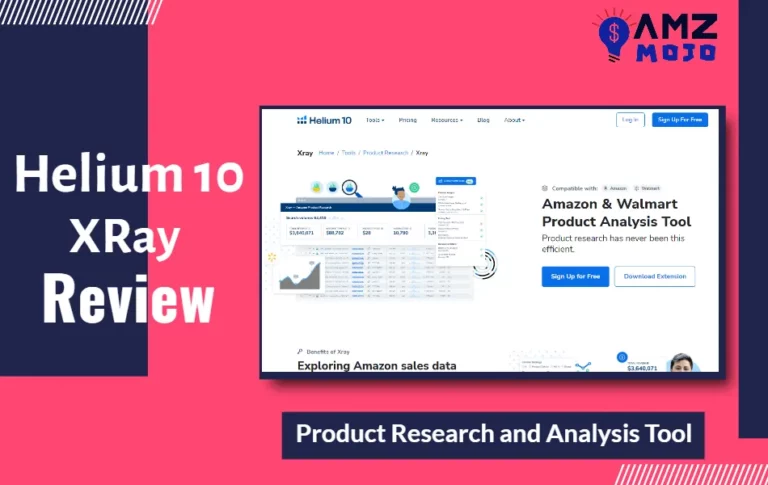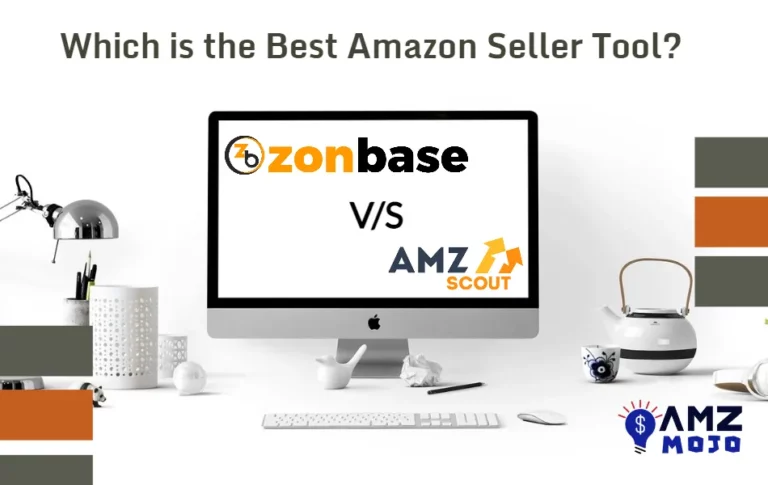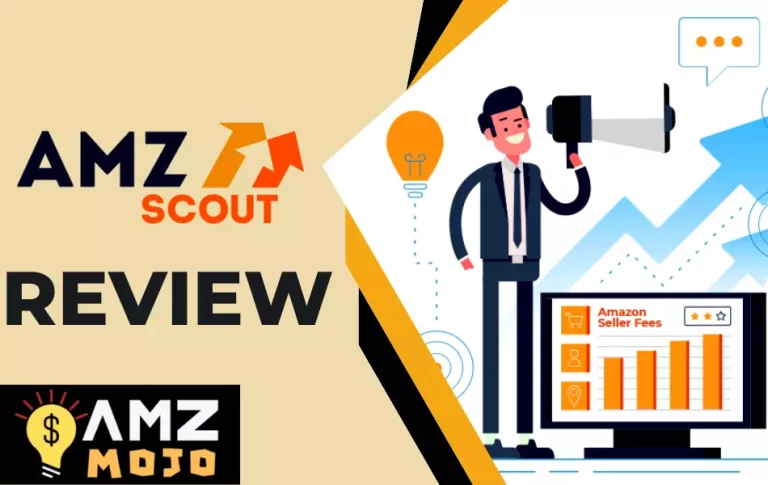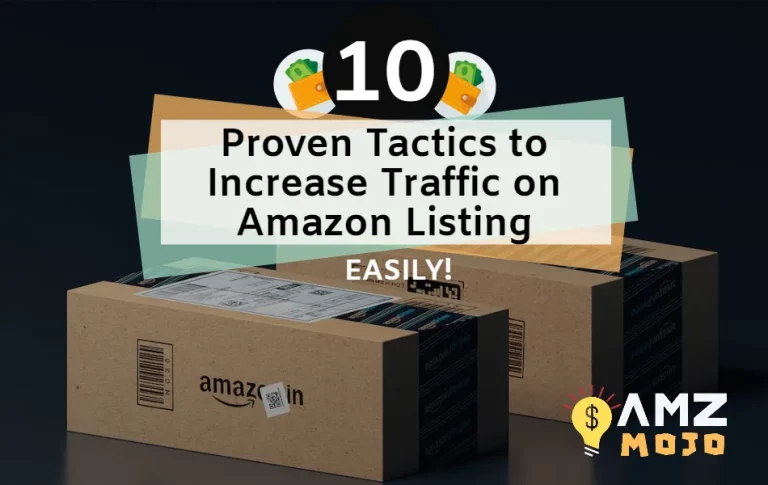Imagine soaring profits, successful sales, and a thriving e-commerce business on Amazon, but without the headaches of inventory management. Too good to be true? Buckle up and join us as we unveil the top 6 methods that are transforming the way sellers operate on Amazon – all without touching a single piece of stock!
E-commerce has become a global phenomenon, with more people than ever before turning to online platforms to buy and sell goods. Amazon, with over 300 million active users, has established itself as a go-to marketplace for sellers around the world.
However, managing inventory can be a major roadblock for many who wish to dive into the world of online selling. But what if we told you that there are strategies to sell on Amazon without inventory?
Whether you're a novice or an experienced seller, this blog post will guide you through six effective strategies to launch and grow your Amazon business without needing to stock and store inventory.
Did you know, for instance, that over 33% of Amazon sellers utilize the dropshipping model, which requires no inventory? Read on to discover more exciting facts and strategies to sell on Amazon without managing inventory.
Dropshipping as a Method

Dropshipping has emerged as a profitable, low-risk method for Amazon sellers to dive into the online retail market without maintaining inventory. This model is particularly enticing because it reduces the initial investment required to set up a retail operation and minimizes the ongoing costs associated with managing inventory.
In the dropshipping model, when a customer places an order through your Amazon store, instead of having a warehouse full of products to ship out, you simply forward the order and customer details to a third-party dropshipping supplier. This supplier, who maintains its own inventory, then fulfills the order by packaging and shipping the product directly to the customer. This means that you, as an Amazon seller, don't have to invest in inventory or deal with the logistics of packaging or shipping.
A key advantage of dropshipping is its scalability. Traditional inventory methods often require more resources and effort as your business grows, but with dropshipping, the primary function of the seller remains the same regardless of the size of the business. You focus on the front end: listing products, optimizing listings, marketing, and managing customer relations. The back end, including stocking, storing, and shipping inventory, is handled by the dropshipping supplier. This enables you to concentrate on improving your customer experience and expanding your product catalog without the stress of logistical issues.
While this model has numerous advantages, it is important to remember that the success of your dropshipping operation heavily relies on your chosen suppliers. Therefore, it's crucial to research and choose suppliers who are reliable, trustworthy, and committed to delivering quality products on time. Consider factors such as the supplier's reputation, past performance, product quality, and delivery times.
Moreover, maintaining open and regular communication with your suppliers can be beneficial in addressing any potential issues promptly. Remember, in the eyes of your customers, you are the face of the product they purchased. They're unlikely to be aware of the involvement of a third-party supplier, so any delays or quality issues will reflect directly on your business.
Dropshipping offers an effective strategy for Amazon sellers to grow their business without the challenges of inventory management. By concentrating on optimizing the front end of the business while leaving the logistical aspects to reliable suppliers, dropshipping can help you increase your product offering, scale your operations, and maximize your profitability with minimal risk and investment.
Try PiPiADS for Competitive Ad Analysis on TikTok
PiPiADS is one of the TikTok ads spying tools that can be used by dropshippers to get an in-depth competitive ad analysis across the ads that are running over to TikTok. As a dropshipper, social media plays quite an important role in advertising your product, and TikTok is undoubtedly an excellent choice to move on with.

Try PiPiADS for $1 Only (Access Pro Features)
ACCESS PRO FEATURES
Use our coupon code “AFFCOUPON“
Best TikTok ads spying tool to try
Upscale your dropshipping business
Access the premium features offered at $1
Spy on your competitors most selling products
$1
Fulfillment by Amazon (FBA)
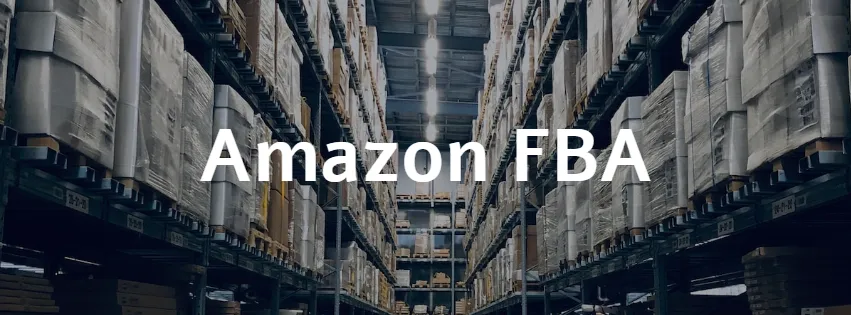
Fulfillment by Amazon (FBA) is a comprehensive solution that lets Amazon handle the heavy lifting of storing, packing, shipping, and even customer service for your products, which can be a game-changer for both sellers with and without inventory. Here's how you can leverage FBA as an inventory-free seller:
- Partnering with Manufacturers or Wholesalers: A popular strategy is to collaborate directly with manufacturers or wholesalers who produce and store the product. Instead of holding inventory yourself, you can order products from these suppliers, who then ship directly to Amazon's fulfillment centers. This way, you can utilize the FBA service without ever having to touch the product yourself. This approach is ideal for sellers who prefer focusing on product selection, listing optimization, and marketing.
- Private Labeling: Another strategy is private labeling, where you source products from manufacturers, add your own brand or label, and sell them under your own brand name on Amazon. In this model, you send your private-label products directly from the manufacturer to Amazon's fulfillment centers. Not only does this strategy let you sell without inventory, but it also gives you the chance to build your own brand.
- Retail/Online Arbitrage: Retail or online arbitrage involves purchasing products from retail stores or online retailers at a low price and then selling them on Amazon at a higher price. Once you've purchased these items, you can ship them directly to Amazon's fulfillment centers. This method eliminates the need for personal storage and allows you to leverage Amazon's fulfillment infrastructure.
Setting up FBA for your Amazon store is relatively straightforward. Firstly, you create an Amazon seller account. After listing the products you intend to sell, you prepare them according to Amazon's guidelines and ship them to Amazon fulfillment centers. Once your products reach the Amazon fulfillment center, they are stored in the warehouse until a customer makes a purchase. Amazon takes care of the rest – from packing and shipping to customer service and returns.
Know How the Amazon Fulfillment Center Operates 🚀
While FBA does involve some costs (storage fees and fulfillment fees), the benefits often outweigh the expenses, especially for sellers without inventory. FBA enables you to reach a vast customer base, offers Prime eligibility for your products, and lends your business the credibility of the Amazon brand. By choosing the right products and employing clever marketing tactics, you can build a successful business on Amazon without holding any inventory.
Print-on-Demand (POD) Services
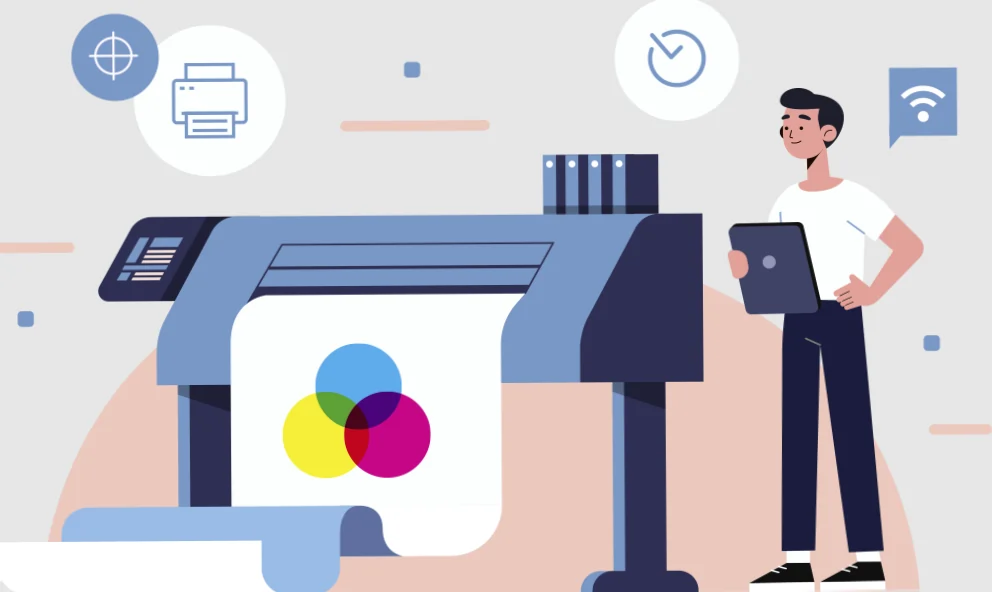
Print-on-Demand (POD) services have revolutionized the e-commerce landscape by offering a unique and flexible business model for Amazon sellers. With POD, you can offer an array of custom-designed products without the need to invest in inventory or worry about storage and shipping. This means you can focus on what you do best: creating compelling designs that your customers love.
Here's a deeper look at how POD services work:
- Design Creation: The first step in utilizing a POD service is creating your unique design. This design could be applied to a wide variety of products, including t-shirts, mugs, phone cases, posters, and more. The design process typically requires graphic design skills, but you can also hire a professional designer if needed. The key here is to create a design that appeals to your target audience.
- Product Selection and Listing: Once you've created your design, the next step is to choose the product you want to print your design on. Different POD platforms offer a variety of products. Once you've selected your product, you can list it on your Amazon store. Remember to craft compelling product descriptions and use high-quality images to attract potential buyers.
- Order Fulfillment: When a customer places an order for your product, the POD service kicks into action. The service prints your design on the product and ships it directly to the customer. You don't have to worry about the logistics of printing, packaging, or shipping.
- Customer Service and Returns: Most POD services also handle customer service related to the delivery and quality of the product, including handling returns and exchanges. This eliminates another operational burden from your plate.
There are several popular POD platforms you can integrate with your Amazon store, including Printful, Printify, and Merch by Amazon. Each platform has its own features, benefits, and costs, so it's important to research each one and choose the best fit for your business needs.
In summary, POD services offer an excellent way for Amazon sellers to sell custom-designed products without the hassles of inventory management. By focusing on design creation and marketing, and leaving the logistics to the POD service, you can build a successful Amazon business that is both scalable and profitable. Remember, the key to success with POD is offering high-quality, unique designs that resonate with your target audience.
Wholesale and Bulk Buying

Leveraging wholesale and bulk buying is another strategic method to sell on Amazon without managing inventory yourself. This strategy entails purchasing large quantities of a product at a reduced, wholesale price and then listing these items for sale on Amazon.
The process begins with sourcing products from reliable wholesalers or manufacturers. These could be local or international suppliers, depending on the type of products you want to sell. When choosing a supplier, consider factors such as product quality, reliability, pricing, and ability to fulfill large orders.
Utilize various tools and platforms to find potential suppliers. You can attend trade shows and industry events, where you'll have the opportunity to meet suppliers and examine their products firsthand. Alternatively, you can explore online platforms like Alibaba, Wholesale Central, or even Google to find suppliers. Reach out to potential suppliers directly, and inquire about their products, pricing, and order fulfillment process.
Once you've identified your suppliers and products, you place a large order and have these items shipped directly to Amazon's fulfillment centers. This strategy, also known as ‘Amazon FBA Wholesale,' allows you to take advantage of Amazon's storage and shipping infrastructure while you focus on listing optimization, customer service, and driving sales.
This method allows you to offer a wide variety of products to customers without worrying about storage, packing, or shipping. However, it's essential to manage relationships with your suppliers effectively, ensuring product availability, and maintaining quality standards to meet customer expectations.
Wholesale and bulk buying provide an avenue for aspiring Amazon sellers to establish their online retail business without the burdens of inventory management, making it an excellent option for those willing to invest in upfront bulk purchases.
Try Spocket to Find the Best Dropshipping Suppliers
Spocket is one of the premium tools that can be utilized by the best dropshipping suppliers across the EU and the US. The biggest plus point at this moment for trying Spocket is that it offers several integrations along with 1000s of premium products being listed over the database. In addition to that Spocket offers a 14-day free trial along with the option to get almost 8 months of service for free if billed annually.
Affiliate Marketing on Amazon

Affiliate marketing on Amazon, facilitated through their Amazon Associates program, offers a lucrative way to earn income online without the need to maintain inventory or manage an Amazon seller account. As an affiliate, you act as a bridge between Amazon sellers and potential customers by promoting products that align with your chosen niche or target audience.
- Blogs and Websites: Creating content-rich blogs or websites related to a specific niche is one popular way to promote Amazon products. This could be through in-depth product reviews, comparison posts, or informational articles that naturally include affiliate links. When visitors to your site click on these links and make a purchase, you earn a commission.
- Review Sites: Review sites are dedicated platforms that offer detailed reviews and comparisons of various products. Here, you can add your affiliate links to the products reviewed. When a reader is convinced about the product and clicks on the link to make a purchase, you earn a commission.
- YouTube Videos: Creating engaging YouTube content is another excellent strategy for Amazon affiliate marketing. Product reviews, unboxing videos, and tutorials can attract a substantial audience. Within the video description or during the video itself, you can share your affiliate links to drive potential buyers to Amazon.
- TikTok and Influencer Marketing: The rise of social media platforms like TikTok, Instagram, and others has paved the way for influencer marketing. As an influencer, you can leverage your following to promote Amazon products. This can be done via product features, reviews, or tutorials, with your affiliate links included in your content or bio.
In conclusion, Amazon affiliate marketing provides a flexible, low-investment approach to generating online income. By leveraging platforms such as blogs, websites, review sites, YouTube, TikTok, and other social media, you can drive traffic to Amazon products and earn a commission for each sale made through your links. The key is to create high-quality, engaging content that naturally integrates affiliate links, attracting viewers and convincing them to make a purchase.
Utilizing Amazon's Fulfilled by Merchant (FBM) Option
Amazon's Fulfilled by Merchant (FBM) is an alternative to the popular Fulfillment by Amazon (FBA) option, offering sellers a greater degree of control over their business operations. Unlike FBA, where Amazon manages storage, packaging, and shipping, FBM sellers are in charge of the entire order fulfillment process themselves.

FBM can be particularly beneficial for sellers with unique product offerings, high-value items, or those that aren't suitable for FBA due to various restrictions. Also, it may be a more cost-effective choice for items with lower turnover rates, as it eliminates FBA storage fees.
However, with increased control comes greater responsibility. As an FBM seller, you'll handle packaging and shipping, ensuring each order reaches the customer on time and in good condition. Prompt and efficient order fulfillment is crucial to maintain high seller ratings and customer satisfaction.
Additionally, you're also responsible for handling customer service, including fielding customer queries, managing returns and refunds, and addressing any complaints. While FBM requires more hands-on involvement and a robust inventory management system, it can provide a high level of autonomy, potentially higher profit margins, and a flexible approach to selling on Amazon without holding the inventory yourself.
FAQs on Guide to Sell on Amazon without Managing Inventory
Can I sell on Amazon without holding any inventory?
Absolutely! By utilizing methods like dropshipping, FBA, POD services, wholesale buying, affiliate marketing, or FBM, you can sell on Amazon without the need to stock inventory.
What is dropshipping, and how does it work on Amazon?
Dropshipping is a business model where you sell products without holding any inventory. When a customer places an order, you pass the order details to a supplier who then ships the product directly to the customer.
Is it necessary to use Fulfillment by Amazon (FBA) to sell without inventory on Amazon?
No, it's not necessary. While FBA is a popular option, you can also utilize other strategies like dropshipping, POD services, wholesale buying, affiliate marketing, or FBM to sell on Amazon without inventory.
Are there any upfront costs associated with selling on Amazon without inventory?
The costs can vary depending on the chosen method. Dropshipping and affiliate marketing often have lower upfront costs, while options like FBA or wholesale buying may require some initial investment.
How can I choose the right strategy for selling on Amazon without inventory?
Consider factors such as your budget, available resources, target market, and personal preferences. Research each method thoroughly, weigh the pros and cons, and choose the strategy that aligns with your business goals.
Conclusion: Sell on Amazon Without Managing Inventory
In conclusion, selling on Amazon without managing inventory is not just possible, but can also be incredibly profitable. Strategies like dropshipping, utilizing Amazon's FBA program, employing Print-on-Demand services, leveraging wholesale buying, exploring affiliate marketing, or opting for the Fulfilled by Merchant model all provide varied pathways to success on the world's largest e-commerce platform.
Each strategy has its unique advantages and considerations, making it crucial for sellers to assess their goals, resources, and target market before choosing the most suitable approach. Whether you're a creative looking to sell custom-designed products, an influencer leveraging a large audience, or an entrepreneur aspiring to start an online retail business, there's a method that can work for you.
Start your journey in the Amazon marketplace today, harnessing the power of these strategies to build a successful online business without the hassles of inventory management. With careful planning and a customer-focused approach, you can tap into the vast potential of Amazon's global customer base, opening the doors to new opportunities and success in the realm of e-commerce.
Quick Links to Related Topics:

